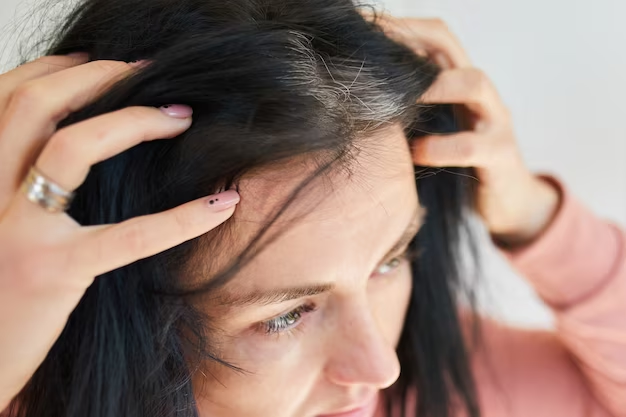Can Hair Replacement Work for People with Alopecia?
- EISHA DYNAMIC
- Jan 3
- 3 min read
Alopecia is a condition that leads to hair loss, which can be both physically and emotionally challenging. Many people affected by alopecia seek ways to restore their hair, and one of the most popular solutions is hair replacement. Hair Replacement in Dubai can help those with alopecia regain confidence by offering a more permanent solution for hair loss. But can hair replacement work for people with alopecia? Let's explore how hair replacement can benefit individuals with this condition.
What is Hair Replacement?
Hair replacement refers to a variety of medical and cosmetic procedures that help restore hair to areas that have experienced thinning or hair loss. For individuals with alopecia, hair replacement can include options like hair transplants, hairpieces, and non-surgical methods such as laser therapy or scalp micropigmentation. These treatments are designed to replicate natural hair growth, giving individuals a fuller, more youthful appearance.
How Does Hair Replacement Work for Alopecia?
Hair replacement treatments for alopecia depend on the type of alopecia and the severity of the hair loss. For people with male or female pattern baldness, hair transplants can be highly effective, where healthy hair follicles are moved from one area of the scalp to another. For more extensive or total hair loss, options like wigs, hairpieces, and scalp micropigmentation are commonly used to achieve a natural look. These treatments can restore volume, density, and shape, improving the overall appearance of the scalp.

Benefits:
Hair replacement treatments provide a range of benefits for individuals with alopecia. Here are five key advantages:
Permanent Results: Hair transplants offer a long-term solution to hair loss. Once the transplanted hair begins to grow, it continues to thrive naturally, providing a permanent resolution for those with alopecia.
Boost in Confidence: Regaining a full head of hair can dramatically improve self-esteem and body image, especially for those whose alopecia has caused emotional distress.
Natural Appearance: Hair replacement techniques like hair transplants and custom hairpieces are designed to look and feel like natural hair, making it nearly impossible for others to notice that the hair is restored.
Non-Invasive Alternatives: For those who may not be candidates for surgery, non-surgical hair replacement options such as wigs, hairpieces, or laser therapy can also offer natural-looking results with minimal risk and recovery time.
Personalized Treatment: Hair replacement options can be tailored to suit the individual's unique hair loss pattern and preferences, ensuring the best possible result for each patient.
How Long Does It Take to See Results?
The timeline for results from hair replacement treatments varies depending on the method chosen. For example, hair transplants may take several months to show visible growth, while non-surgical treatments like wigs or hairpieces provide instant results. It's important to have realistic expectations based on the type of treatment you're pursuing.
Who is a Good Candidate for Hair Replacement?
Individuals with alopecia who are looking to restore their hair are potential candidates for hair replacement. However, the suitability of certain treatments depends on the severity of hair loss, the cause of alopecia, and overall health. A consultation with a hair restoration specialist can help determine the best approach based on individual needs.
FAQs:
Can hair replacement completely restore hair for people with alopecia?
Hair replacement can offer a significant improvement, but results depend on the type of alopecia and the treatment chosen. In cases of extensive hair loss, hair replacement provides the best results when combined with personalized treatment plans.
Is hair replacement a permanent solution for alopecia?
Yes, certain hair replacement options like hair transplants offer long-term and often permanent results. The transplanted hair grows naturally over time.
Can hairpieces and wigs look natural for people with alopecia?
Yes, high-quality wigs and hairpieces can be custom-designed to match the natural color, texture, and density of the individual’s hair, ensuring a realistic and natural appearance.
How do hair transplants work for people with alopecia?
Hair transplants involve moving healthy hair follicles from one part of the scalp to an area affected by alopecia. This helps to restore hair in areas where natural growth has stopped.
Are there non-surgical options for hair replacement?
Yes, there are various non-surgical options such as wigs, hairpieces, and laser therapy that can provide temporary or long-term solutions for people with alopecia.
Conclusion:
Hair replacement can be an effective treatment for people with alopecia, offering a range of solutions from permanent hair transplants to non-surgical options like wigs and hairpieces. By restoring hair density and improving appearance, these treatments can enhance self-confidence and quality of life. For those seeking a solution to alopecia, hair replacement provides both immediate and long-lasting results.


Comments